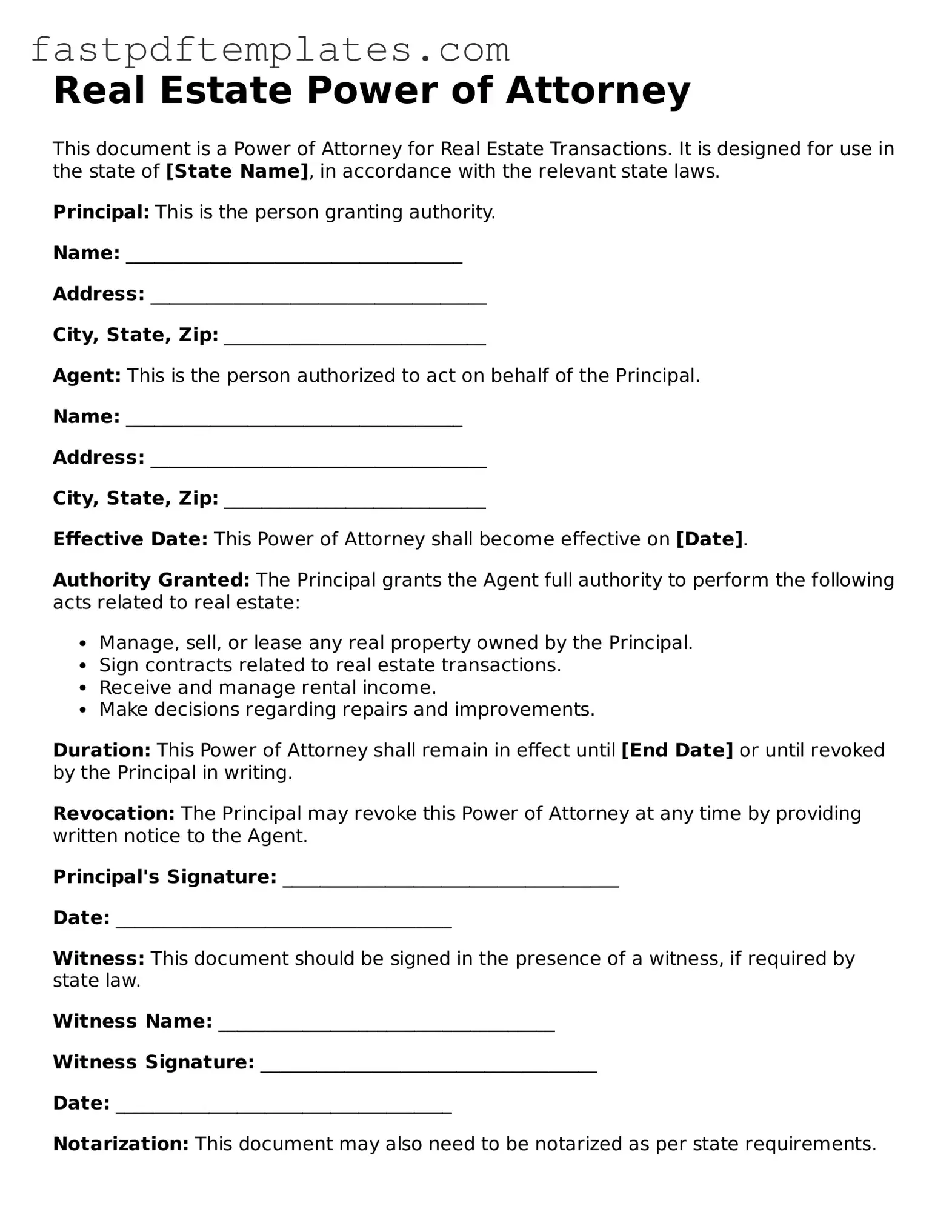Real Estate Power of Attorney
This document is a Power of Attorney for Real Estate Transactions. It is designed for use in the state of [State Name], in accordance with the relevant state laws.
Principal: This is the person granting authority.
Name: ____________________________________
Address: ____________________________________
City, State, Zip: ____________________________
Agent: This is the person authorized to act on behalf of the Principal.
Name: ____________________________________
Address: ____________________________________
City, State, Zip: ____________________________
Effective Date: This Power of Attorney shall become effective on [Date].
Authority Granted: The Principal grants the Agent full authority to perform the following acts related to real estate:
- Manage, sell, or lease any real property owned by the Principal.
- Sign contracts related to real estate transactions.
- Receive and manage rental income.
- Make decisions regarding repairs and improvements.
Duration: This Power of Attorney shall remain in effect until [End Date] or until revoked by the Principal in writing.
Revocation: The Principal may revoke this Power of Attorney at any time by providing written notice to the Agent.
Principal's Signature: ____________________________________
Date: ____________________________________
Witness: This document should be signed in the presence of a witness, if required by state law.
Witness Name: ____________________________________
Witness Signature: ____________________________________
Date: ____________________________________
Notarization: This document may also need to be notarized as per state requirements.
This Power of Attorney is a legal document. It is recommended to consult with a legal professional before completing and signing.
